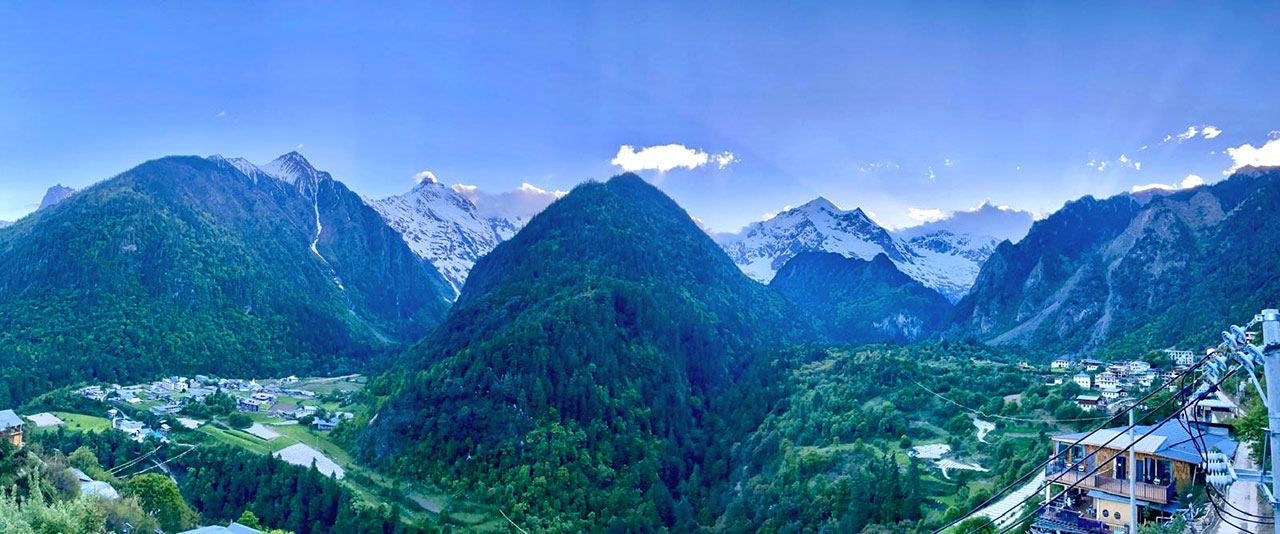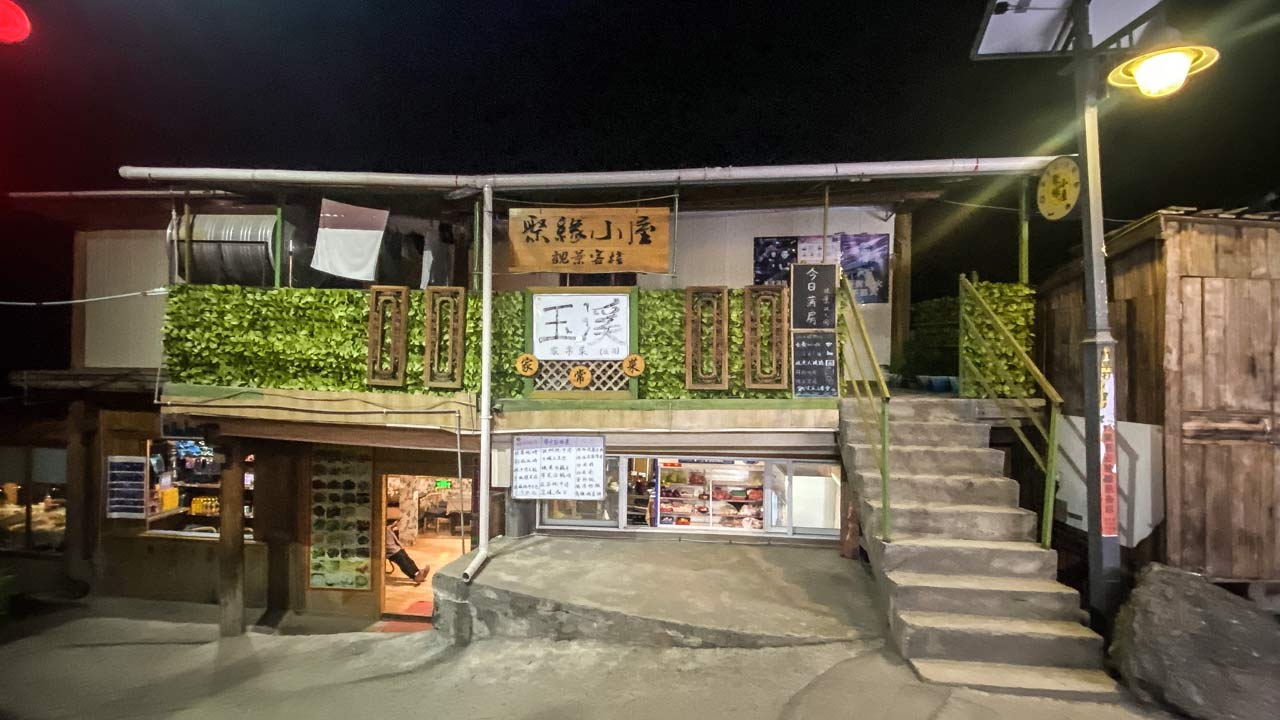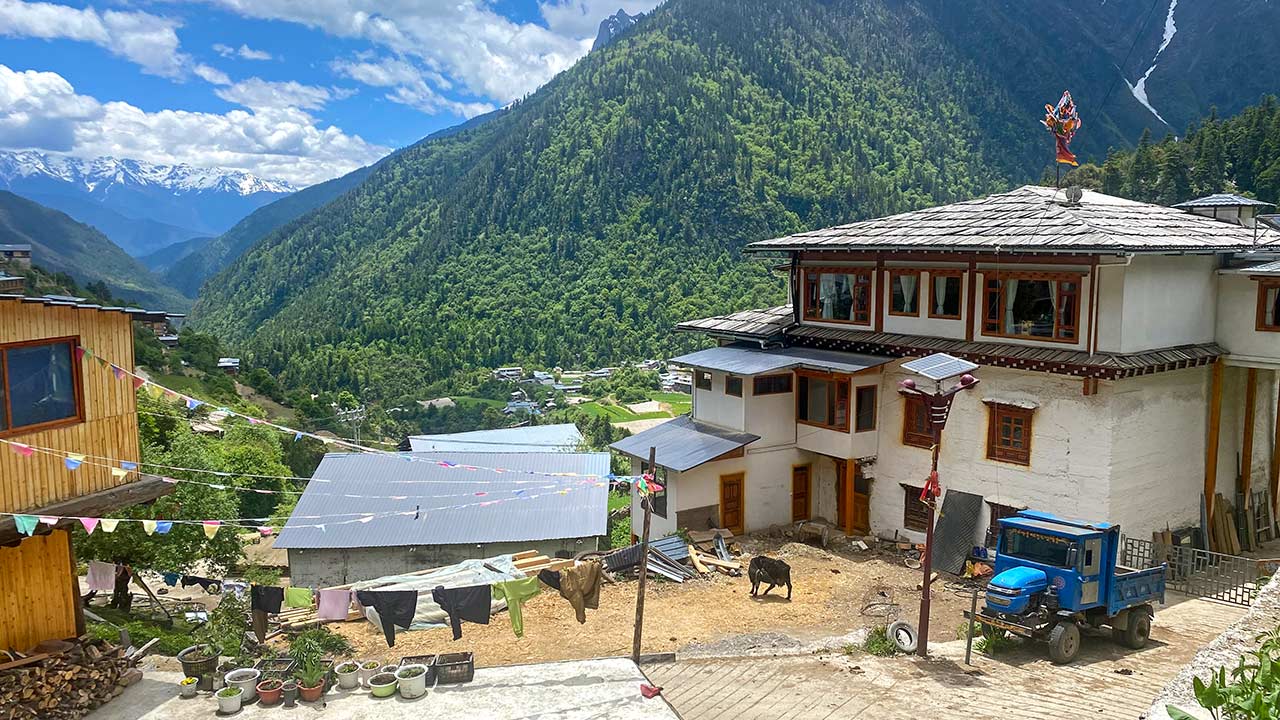Also available in: Deutsch
For me, a trip to China means a combination of modern mega-cities, millennia-old and traditional culture, green landscapes, rice terraces, Buddhist temples, and the unknown. In the province of Yunnan, in southwestern China, all these imaginations and desires are fulfilled. The region, which borders Tibet, Vietnam, and Myanmar, is also called the Kingdom of Plants. The mountainous, alpine landscape is almost entirely green, densely forested, and overshadowed by giant mountains, the foothills of the Himalayas. Hiking from Yubeng Village is a perfect way to explore the area.
But it’s not only the vegetation and animals that are diverse here. Yunnan is home to most of China’s ethnic minorities, including the Yi, Naxi, and Tibetans. This cultural diversity is an absolute peculiarity of the region and allows insights into ancient traditions, customs, and beliefs. In the partially preserved and restored old towns like Dali, Lijiang, or Shangri-La, people live between tradition, modernity, and Disneyland.
Travel Report about Yubeng Village
While searching for hiking regions that we wanted to explore on our own, we came across the village of Yubeng in northwestern Yunnan. Yubeng is undoubtedly the right place if you want to experience some high-altitude air combined with Tibetan flair. The village is located at about 3,500 m and is surrounded by an impressive mountain panorama. The village consists mostly of simple wooden houses built by the Tibetan population.

The giant mountains with their snow-covered peaks up to 6,700 meters high, gleaming white in the sun, the yaks grazing on the green meadows, and the Tibetan flags fluttering everywhere in the wind create an exceptional and unique atmosphere. The most prominent seems to be the peak of the Meili Snow Mountains, which is called Kawakarpo in Tibetan. The mountain is one of the four sacred mountains of Tibetan Buddhism.
Accommodation in Yubeng – Our Hotel Tip
The Yubeng Upper Village has a few more accommodations than the Lower Village. However, a lot of construction is happening in both villages, so the offerings will expand significantly in the short term. The accommodations are more in the B&B or homestay style.
We spent our stay at the Yourlan Hotel in Upper Yubeng Village. From here, you have an unobstructed view and are not right in the hustle and bustle but a few meters away from the main road.
The hotel is run by a local family and offers double rooms with private bathrooms, as well as multi-bed rooms with a small breakfast room and a terrace. From there and also from the upper rooms, you have a fantastic view of the Meili Snow Mountain. The rooms are simple, clean, and modern. It was definitely a good choice and good value for money.
Quick Info About Yubeng
Best Travel Time for Hiking in Yubeng
April to June (from June on, the rainy season begins) and September to November.
Duration of Stay for Hiking in Yubeng Village
To undertake both day hikes, you should plan for three overnight stays.
Food and Catering in Yubeng
In Yubeng, you will find the typical cuisine of Yunnan. In addition, the yak plays a special role. Dried yak meat, but also fried yak meat (e.g., as a yak burger) and yak yogurt are delicacies in this region. The yak yogurt is particularly recommended. In the village itself, you will find small shops for the necessities of daily life and some provisions for your hikes, such as water, fruit, instant soups, hygiene articles, etc. You should bring a basic supply of pharmaceutical items yourself.
Preparation for Hiking in Yubeng Village
Preparation also includes dealing with the topic of altitude sickness. We planned a whole day for acclimatization in Shangri-La, which is at a similar altitude. In between, we felt slight headaches, and at first, climbing stairs was a bit more difficult. Overall, however, we did not have any further complaints during the stay or on the hikes.
Even at this altitude, the sun in the warmer months of May and June is very strong and brings sweat to your forehead, while it gets quite cold in the evenings. Until April, you have to expect snow in some parts.

Communication on Site
We found the locals to be very helpful, friendly, and unobtrusive. The locals themselves speak hardly any English. The menus are often translated, and otherwise, communication with a translation app is quite possible.
Internet Connection
WLAN is available in most accommodations and works. With our eSIM, we always had a good reception.
Hikes in Yubeng
The area for hiking in Yubeng Village is manageable but offers beautiful views and impressions. Navigation is relatively easy due to the path and signage. We used Maps.me for support.
The following hikes can be undertaken within the village:
1. Sacred Waterfall
- Length: 14 km (round trip) from Upper Village
- Duration: 4-6 hours
- Elevation gain: approx. 470 m
- Difficulty: Medium
The hike leads through Lower Yubeng Village and ends at the Sacred Waterfall next to a glacier. The path is fully prepared, easy to walk, and leads over partly paved or forest paths to the waterfall. The last kilometer consists of countless stairs and was the most strenuous and sweat-inducing part of the hike. In between, a small local kiosk offers the opportunity to buy water and instant Ramen soup.

The view of the mountain range and the Meili Snow Mountain along the way is incredible and has a very sublime atmosphere. You feel especially close to the sky. Along the way, you repeatedly encounter various sacred sites for the Tibetans, such as a river, trees, or rocks. The Tibetans circle the waterfall three times because they believe it frees them from diseases and misfortune.
2. Ice Lake/Glacier Lake
- Length: 16 km (round trip) from Upper Village
- Duration: 6-8 hours
- Elevation gain: approx. 700 m
- Difficulty: Medium

The hike to Glacier Lake takes you up to just under 3,900 meters. The 700 meters of elevation gain are tough and first lead with a steep ascent through a forest. Once at the top, you again have a fantastic view and walk over lush green meadows and pastures of the yaks. Alpine mountain feeling up to the jade-colored mountain lake. Here, too, there is a stop where you can refill your water supplies.
3. Ninong Village
- Length: 16 km (one way)
- Duration: 4-6 hours
- Difficulty: Medium
This tour while hiking in Yubeng Village is a day trip to Ninong, and you do not return to Yubeng. At the end of the tour, you reach a parking lot where drivers are already waiting for onward transport to Shangri-La.
The path is mostly flat and leads through a gorge. The landscape is typical for this, little greenery, caves, and small waterfalls. Partly, the path is very narrow and therefore not entirely safe when it rains.
Restaurants and Cafes
In both places, there are some simple restaurants and cafes with predominantly Chinese food. The restaurants are all family-run.
Unfortunately, we cannot translate the name of our absolute favorite restaurant in Upper Yubeng, but perhaps the photo will help you find it. It’s on the main road and hard to miss. The family is very friendly, and Mama cooks excellently. In addition, you have a fantastic view of the mountains.

If you ever crave something in a Western style and a very solid pizza, Le Bistro in Lower Yubeng Village is your place. The stylish restaurant has a selection of Western dishes, offers a cozy modern style, and invites you to linger. The coffee and craft beer from Shangri-La are also recommended.
Overall, the food in Yubeng is a bit more expensive than you might know from other places in China. But still at an affordable level.
Arrival and Departure from Yubeng
Note: I would like to provide you with some information in advance. Since August 2023, China is again open for foreign tourists. Since then, previous information on older travel blogs has become partially outdated. This also applies to the journey to Yubeng. Here I write how we arranged the journey during our visit in May 2024.
Yubeng is a small mountain village and therefore has neither its own airport nor a train station. I recommend combining the journey with a stay in the city of Shangri-La. Shangri-La is located about 170 kilometers from Yubeng. From there, the journey is possible in one day.
From the bus station in Shangri-La, a public coach runs several times a day for about 62 RMB (approx. €8) to Deqin. The journey takes about 4 hours and leads over a pass to the bus station in Deqin. Around 2 pm, a bus to Xidang departs. The trip takes 45 minutes and costs 20 RMB (approximately €2.50).
Tip: Alternatively, you can also take a private driver or a taxi to Xidang. The drivers are sometimes standing on the street in front of the bus station. The prices, of course, have to be negotiated in advance.

Xidang is the central arrival point for self-drivers and tour groups. There is a ticket booth where you can buy tickets for about 200 RMB (€25) per person for the onward journey with SUVs to Yubeng Village. The information on site is not translated into English. The ride in the SUVs takes about 20 minutes and is moderately adventurous. The SUVs can only transport small luggage like backpacks or carry-on suitcases.
Alternatively, you can walk about 10 kilometers to Yubeng from here. However, the hiking trail runs along the paths of the SUVs and seemed less idyllic. In older travel blogs, you might read about onward transport with donkeys or mules, although this option no longer exists. From Yubeng Village, you can walk to Upper Yubeng Village within 15 minutes or to Lower Yubeng Village in an hour. However, some hotels also organize transport to the accommodations.
The departure is somewhat easier. You go back to your starting point, where the SUV dropped you off. Here, too, there is a small ticket booth for tickets with the SUV back to Xidang. The ride is a bit cheaper and costs 150 RMB per person. There are no fixed departure times; sometimes you have to plan for some waiting time. From Xidang, minibuses now run directly to the old town of Shangri-La. The journey takes about 4 hours and costs 70 RMB per person.

About the Author
From Düsseldorf, Germany out into the wide world. Isabel loves to travel and discover new cultures, the unfamiliar. But she also regularly enjoys sports and relaxation in nature, as well as impressive landscapes. Always happy to be off the must-see lists: It’s better to see something once than to hear about it a thousand times. Learn more on her Instagram channel.
Have you already been to Yubeng Village on the border to Tibet? Are you interested in this area, and would you enjoy hiking from Yubeng Village? Write us your opinion in the comments.

Gast
This is a guest post. If you have any questions or suggestions on the topic, simply write them in the comments or contact the guest author directly on his/her blog.